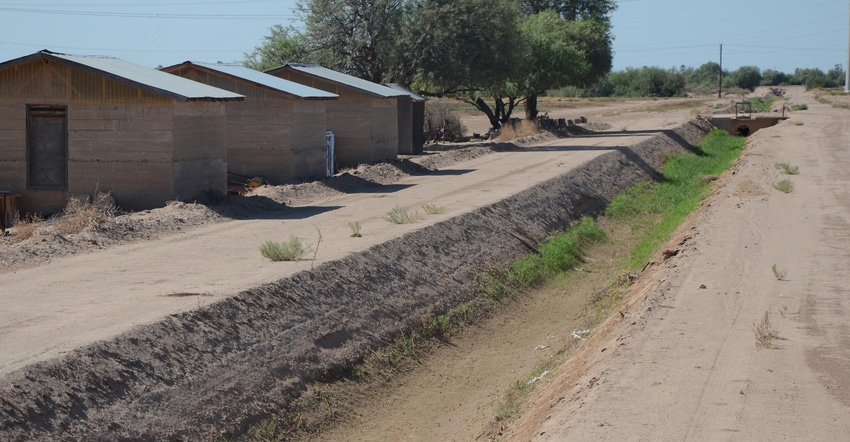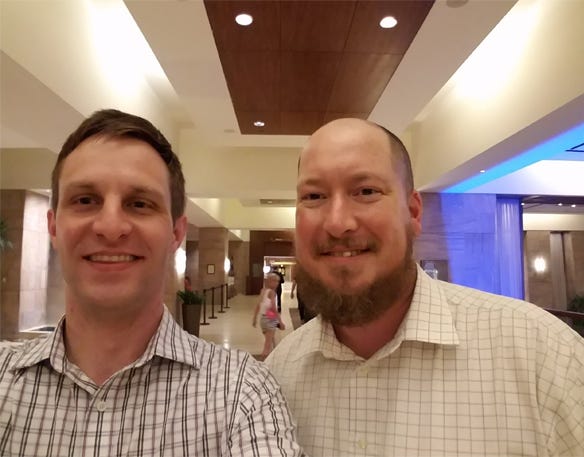August 17, 2018

Traveling across the country always makes for an illuminating experience — even when the trip takes you to the 110-degree heat of southern Arizona in August. It's one of the many perks of being an ag journalist. You travel to new places, meet new people and, hopefully, learn about agriculture in the region. So, when the opportunity arose to arrive in Scottsdale a day earlier for Ag Media Summit to take part in the summit's annual ag tours, I was all in.
The Sonoran Desert of southern Arizona isn't exactly the first place you think in terms of agriculture, but the Gila River Valley has historically been a hotbed for irrigated cotton, alfalfa, durum wheat (locally called "desert durum") and grain sorghum.
Of course, growing crops in a desert environment has its challenges. One of these is the obvious: Water for irrigation, whether from surface or groundwater sources, is in short supply. Surface irrigators, in particular, rely on an inconsistent supply through canals and, in some cases, water from sources like the Gila River can be silty.
The other eye-opener was the prevalence of conventional tillage in the valley. Rough disking is often required after cotton to control pink bollworm. However, with all the dust storms (called "haboobs" in Arizona and other arid places around the world), why not try no-till and cover crops on non-cotton acres to keep the soil in place, while hopefully, knocking back weeds and preventing evaporative losses? It's a challenge few in the region have successfully tackled, but no-till is catching on in parts of Arizona.
What was most surprising was the region's connection to the Corn Belt. On a visit to Pinal Energy in Maricopa — the first ethanol plant in Arizona, which produces 50 million gallons of ethanol a year — we learned that the bulk of the plant's supply comes from Midwestern states like Iowa and Kansas. And most of the coproducts produced at the plant are fed to dairy cattle in the area. In a sense, corn from the Midwest helps sustain the dairy industry in the desert.
However, sometimes trips like this provide insight into not only local agriculture, but also agriculture in another part of the world. One of the journalists I shared a ride with to the farm tours was Lloyd Phillips of South Africa. Phillips, a senior journalist at Farmer's Weekly, shared his experience covering agriculture in South Africa during one of the workshops at AMS.

AFRICA TO ARIZONA: This was the first trip to the Ag Media Summit for me and Lloyd Phillips (right) with Farmer's Weekly of South Africa.

It goes without saying that South Africa is a different world, agriculturally speaking, compared to the U.S. In post-apartheid South Africa, the economic disparities between farmers are much bigger than those in the U.S. Although there is a wide range in sizes of farming and ranching operations in the U.S., the difference in size and farm income are much bigger and racially separated in South Africa. That is, there are larger, developed white farmers, and smaller, developing black farmers. Many of these smaller farmers are working to close that gap.
And while expansion is an easier step for developed farmers with the capital to invest in new technology and equipment, it's a bigger challenge for developing farmers to take that step. In addition to the range in topography, soils, climate and cropping systems that go with such a large geographic region, ag journalists like Phillips are tasked with covering the wide range of demographics among farmers as well.
Sometimes, when traveling (in this case, the desert Southwest), the biggest takeaway is something that wasn't on your radar initially.
You May Also Like




